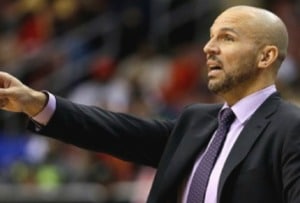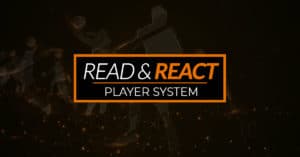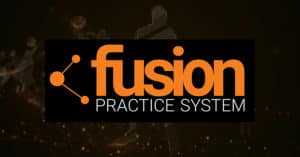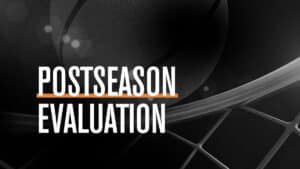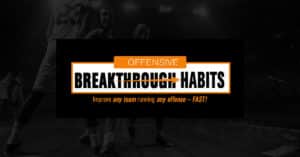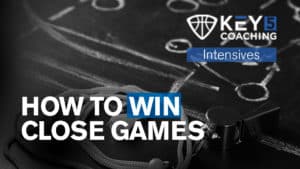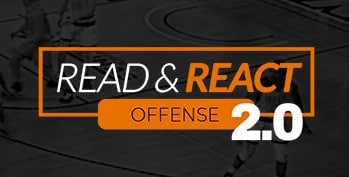Several years ago Yahoo Sports wrote an article about Jason Kidd’s move to the bench, I thought a point raised would be the perfect topic to write about: How different a coaches vision is from a players’. As a potential future Hall of Fame point guard who spent 18 years in the NBA and winning an NBA Championship with the Dallas Mavericks in 2011, Kidd thought his superb floor vision would carry over to coaching seamlessly. However, it didn’t take long for him to realize he needed to widen his vision away from the basketball. Below is an exert from the article I linked above:
…This became clear once Frank had blown the whistle, stopped play and started to remind a player far off the ball, about the proper defensive assignment. And then it happened again and again, and soon Kidd found himself squatting down, wondering if maybe Frank, a 5-foot-5 assistant with no playing pedigree, had a low-level avenue of vision that wasn’t available to the Hall of Fame point guard at 6-foot-4…
Only, it had everything to do with the trained eye of a coach. Standing, sitting, squatting – it didn’t matter – Kidd still couldn’t see everything Frank could see on the floor…
As a player, you could see the floor, but what happened in Summer League was the perfect example of how that isn’t enough anymore,” Kidd said. “Here is a pick-and-roll right in front of me, and I think I’m doing the right thing but Lawrence has the vision of seeing everything else – all the things happening on the weak side of the ball…
“That told me right there: You have to widen your screen. Your screen has to see everything that’s developing, because your tendency is to just focus on the players that are involved with the ball.
“You need to be watching all 10, and going through a (mental) checklist answering if they’re doing what you’re teaching offensively and defensively.”
Rewind back to 2004 when I first joined Billy Donovan’s staff and Florida and a very similar thing happened to me. While watching our first few practices before embarking on a foreign trip to the Bahamas (which never happened thanks to a Hurricane…that also never happened), I was amazed at what I was seeing. Every few minutes one of the coaches would stop play and start shouting out corrections to players that were not even involved in a play. Since just a year prior I decided to walk away from playing college basketball, watching practice from a coach’s perspective was new to me. That is when I realized I need to start paying attention, I was about to receive my PHD in coaching for the next five years.
After a few months into practice and regular season games, not yet comfortable to sit and pick a coach’s brain, I decided to ask one of the Graduate Assistants, “How do they do it? How do they see all 10 guys at once?” His reply was simple, “Stop focusing on the ball and the game will start to slow down for you.” It took some time after spending hours upon hours watching practice and game film, but it finally happened, the game started slowing down.
I am not going to sit here on my high horse and tell you that I now see every single thing that happens during every possession, but I sure do try! While I do not have an exact mental checklist that I go through every possession, here are some of the things that I look at while I am coaching:
Offensively
- What defense is our opponent in?
- One thing I learned from Coach Donovan is if you are not sure if a team is in Man or a Zone (Matchup), send a cutter(s) along the baseline and if the defense switches off, there is your answer.
- Are there any mis-matches we can take advantage of?
- Any obvious 2-man game options we can look to attack quickly.
- Example: If the ball is on the wing and ballside corner is filled, I love to get my wing players driving hard baseline towards the rim. Most poorly taught teams will help from the corner resulting in an easy kick out for a catch & shoot. If the corner defender stays and there is not much mid-line help defense a lay-up will be your result. Similarly, if the mid-line defense over helps you should always have a player in the opposite corner on wing/baseline drives for another kick out catch & shoot. You’ve just given yourself 3 very simple scoring options just off a drive to the rim.
- Any obvious 2-man game options we can look to attack quickly.
- Are there any holes in their helpside that we can attack? (Example: Skip passes, baseline/middle drives)
- vs Zone: There are always vulnerable places in the defense. I look for gaps in the zone and make any adjustments during timeouts and at halftime. If you scouted your opponent these adjustments have possibly already been taught to your players making this process much easier. (Example: If the back of the zone plays up the lane 1st marker or above, when the ball is on the wing flash players to the short corner behind the zone instead of to the middle.
- Pick & Roll Situations
- How are they guarding the pick and how can we attack it? (Level / Show/ 1/2 Blitz / Blitz)
- Is the helpside defense in the proper placement to help on the roll or the pop. Make in-game adjustments accordingly to attack the weaknesses in the defense.
- How are they guarding the pick and how can we attack it? (Level / Show/ 1/2 Blitz / Blitz)
- Press Offense
- I always focus on the back guard(s) and opponent coach during free-throws and dead balls to try to steal their communication and determine if they are pressing. This allows us to get the players into the proper places to be most effective ahead of time.
- Post Offense
- Is the defense full fronting? If so, we will look to throw over top if there is not any backside help or swing the ball for a seal.
- Are they doubling down on the post? If so, when/where is the double coming from and where can we quickly move the ball to attack the holes in the defense?
- When the shot goes up, I immediately find the point guard (or next closest guard to the top if the PG is the shooter) to make sure we have someone back on defense and the other four players are crashing the glass hard to offensive rebound.
There are many more components to watch for on offense but these are the major ones that you can expect to see on any given night. Part 2 later this week will discuss what I look for on the defensive end of the floor.

